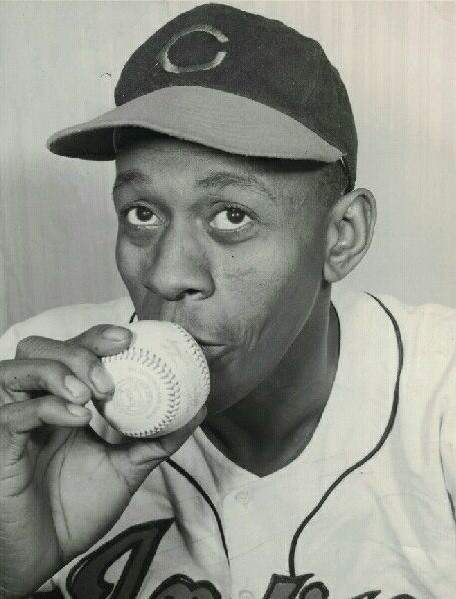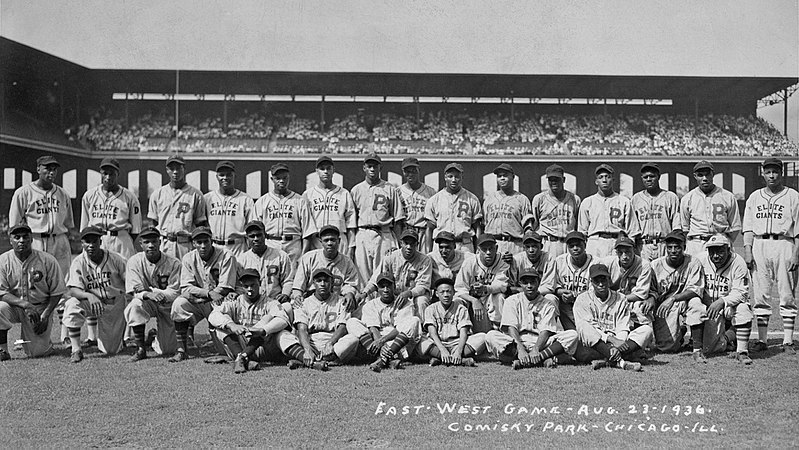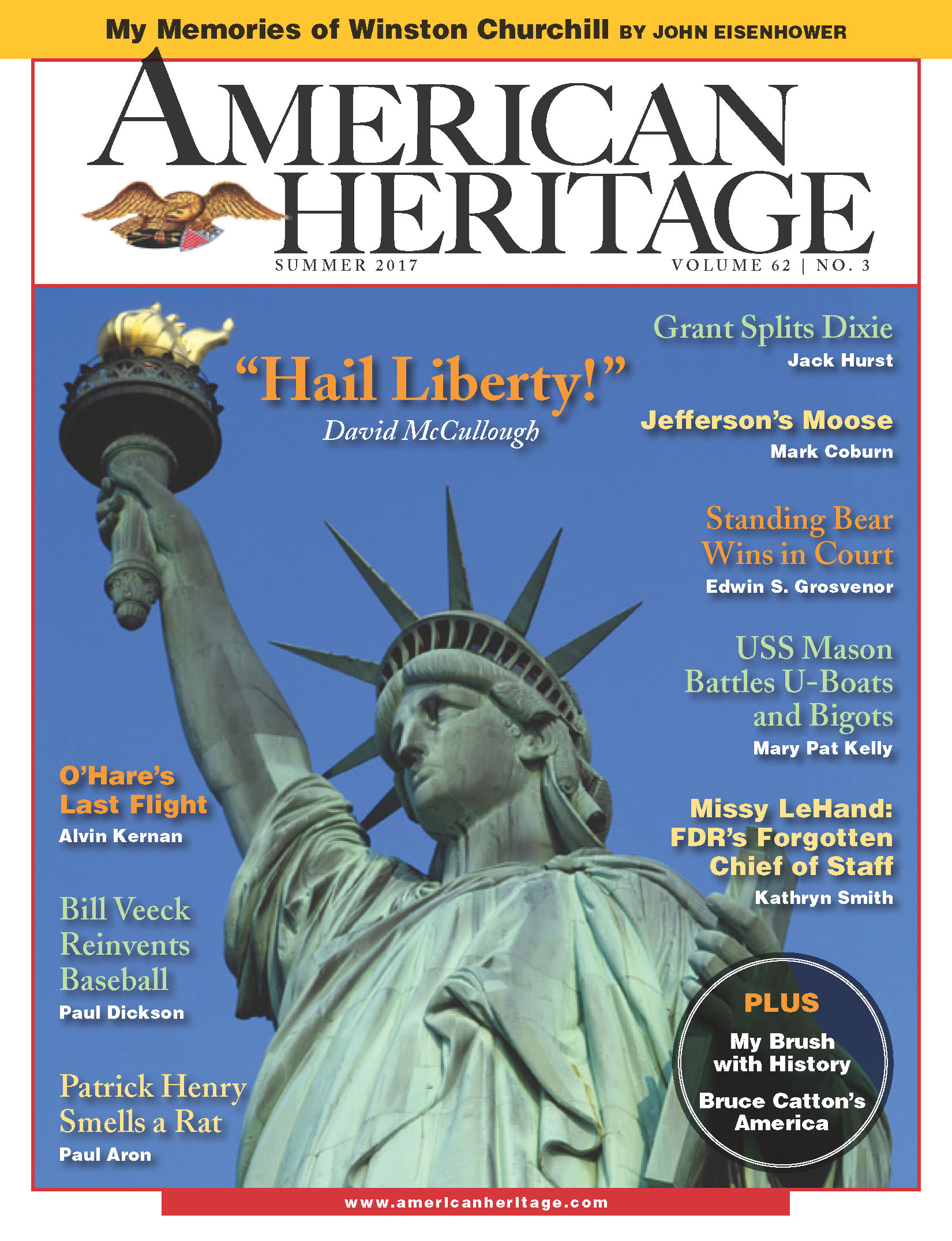The pitcher with the unhittable fireball deserves as much credit for breaking baseball’s color barrier as Jackie Robinson
-
Spring 2010
Volume60Issue1

Leroy “Satchel” Paige, arguably the greatest pitcher ever to throw a baseball, was as green as a big league infield that April day in 1926 when he joined his first professional team, the all-black Chattanooga White Sox. Everything he owned—a couple of shirts, an extra pair of socks, underwear wrapped in an old pair of pants—still fit into a brown paper sack, the same as it had eight years earlier, when he was sentenced to the Alabama Reform School for Juvenile Negro Law-Breakers. That was a good thing, because Satchel still could not afford a suitcase. He rented a room in a flophouse at the royal rate of two dollars a week. No sooner did he collect his first five dollars than he headed to the pool hall where a pair of sharks let him win a few games, then ran the table when the betting began. “I always figured I was pretty good at nine-ball and eight-ball,” Satchel told an interviewer decades afterward, “but those sleepy-eyed Chattanooga sharpies played me like the biggest fish in the Tennessee River.”
He looked like a rube on the diamond, too. His new uniform hung limply over his six-foot-three-inch, 140-pound frame. Street shoes with spikes nailed to the bottom had to suffice until the team could come up with regulation cleats large enough to fit his “satchel-sized” 11 feet. The one pitch he knew was an overhand fireball, so his catchers could dispense with signs; hitters knew it would be all heaters all the time. They quickly learned that while Paige was fast, he also was wild. Worst of all, he was swaggering. He resisted offers of coaching and crowed to his receivers, “Hold the mitt where you want it. The ball will come to you.”
What saved him was a willingness to work hard and a mentor as hardboiled as Alex Herman, a former semipro player. Lesson one was location, location, location: getting the ball over the plate every time. The key to control like that was practice. Herman lined up empty soda pop bottles behind home plate; Satchel worked at knocking them down, mornings before other players got to the field and evenings after they left. Herman knew there was something magical about this rookie righthander. His talent traced back to his hometown streets of Mobile, Alabama, where he fired rocks with enough power and precision to bring down a bird or a rival gang member. He learned to play at reform school and could pitch hard and sure enough to drive 10-penny nails into a plank set up behind home plate. The coach saw, too, that unless his raw gifts were refined, Satchel would stand little chance in a Jim Crow America where baseball, like every institution that mattered, was split into white and black worlds. “It got,” Satchel recalled, “so I could nip frosting off a cake with my fast ball.”
Over the course of his career, Satchel’s numbers would become more impressive than any pitcher’s before or since. He won 2,000 games, which is four times more than the legendary Cy Young and five times as many as Warren Spahn or Roger Clemens. He set records for no-hitters (55), strikeouts in a game (22), and games played in a single season (153). Even more enviable is his longevity: he started playing professionally when Babe Ruth was on the eve of his 60-home-run season in 1926, and still was pitching when Yankee Stadium, the “House that Ruth Built,” was entering its fifth decade in 1965.
Herman also kept careful watch over his new talent off the field, regularly inviting him to dinner in Chattanooga and seeing that he was in bed by 9:30. On the road it was easier. Everyone ate together on the bus (generally crackers with bologna or peanut butter), then used the bus’s ragged seat cushions as mattresses and suitcases as pillows. While such accommodations meant waking up with stiff backs and mouthfuls of dust, they eliminated any chance of hell-raising. When the gate was high enough to let the White Sox check into a hotel, young women would follow the aspiring ace back from the field and leave him scented notes. Herman made sure that they got no further than the front desk.
While Herman believed he was molding his protégé into a man as well as a pitcher, the truth was that, with each paycheck, Leroy Satchel Paige became a bit more difficult to tutor or temper. He went back to the Chattanooga pool hall and won back his five dollars, plus interest. He got acquainted with local moonshiners. When his next payday came around, his closet suddenly filled with slacks and jackets, the first he had ever owned that were neither moth-eaten nor hand-me-down. He bought a steak dinner and a shotgun. He got a bottle, went looking for a gal, and did not come home for two long days.
Pitching still was the main thing—and what kept Satchel in the money and Herman’s good graces. He fine-tuned a pitch so fast that batters said it looked as small as a pea and catchers complained it set their mitts on fire. His first game, against New Orleans, had been a two-hitter. Two days later he gave up just three hits and struck out 14 batters. Chattanooga—not much of a ball club in 1925—won the first-half championship without losing a single game after Satchel arrived in 1926. His reputation spread fast, at least within the confines of that riverfront city and the Negro Southern League.
Satchel would be coveted by white teams throughout his career in blackball. He had first heard the tease “if only you were white” back home in Mobile and would hear it repeatedly for another 20 years in Jim Crow America. Named after a white actor in blackface playing a cowering plantation slave in an 1820s minstrel show, Jim Crow refers to the amalgam of Southern statutes that legalized separation of the races everywhere from public bathrooms to hospitals, boarding houses, and even parks. It also is shorthand for a racist way of life. By either definition Jim Crow was there with Satchel in Mobile, capital of the old Confederacy and a city where many white residents still were fighting battles from a war they lost two generations before. Jim Crow is even more central to the saga of the Negro Leagues, where Satchel played most of his career. The era of black baseball ran from 1887, when the first professional league crafted its color line, through the path-breaking signing of Jackie Robinson in 1945—60 years that mirror the rise and fall of legally sanctioned segregation in America.
Satchel Paige started hacking away at Jim Crow long before the world heard of Jackie Robinson. Satchel never was a modern militant, waging war over every slight, but he brought a spotlight to the Negro Leagues. He pushed to be paid a wage commensurate with his drawing power, in the process raising the wages of his teammates. His salary in his best years at least equaled the President’s, which is how he could afford 40 tailor-made suits, 30 pairs of custom-made shoes with pearls in the toes, underwear festooned with flowers, and a personal valet. He proved that black fans would fill ballparks, even when those parks had concrete seats and makeshift walls, and that white fans, too, would turn out to see black superstars. Satchel pitched so brilliantly, especially when his teams were beating the best of the white big leaguers two of every three times they played them, that fans, sportswriters, and big league owners could not help but notice.
July 1948
Satchel’s July 3rd telegram to Bill Veeck, who owned the Cleveland Indians, was point-blank: “Is it time for me to come?” The pitcher had swallowed his pride when Jackie Robinson broke through baseball’s color bar by suiting up with the Brooklyn Dodgers at the start of that 1947 season. He was kicked in the gut again three months later, when the Indians integrated the American League by hiring Larry Doby. Veeck had claimed for years that Satchel was the greatest Negro Leaguer of all, born to break barriers. Now, a day after the Doby signing and two decades after Satchel’s professional debut in Chattanooga, the aging hurler simply had to ask. Veeck’s reply was a cruel twist on the old tease: “All things in due time.”
It was not that Veeck doubted the veracity of the Satchel legend. Paige’s 13-inning, 1–0 triumph over Dizzy Dean in California in 1934 remained Veeck’s benchmark for pitching perfection. The Indians’ owner embraced the whole package that was Satchel, from carousing to storytelling to filling whatever room he was in. Veeck had only two questions when he took over in Cleveland in the mid-1940s: Did the flamethrower have enough fire left to help the Indians? If so, when was the time right?
Abe Saperstein, who owned the Harlem Globetrotters and had helped find bookings for Satchel for years, assured his friend Veeck that the pitcher still could work his magic. That left timing. Veeck almost signed Paige instead of Doby in the summer of 1947, but concerns lingered that Satchel’s age and roguish reputation would give baseball’s old guard the opportunity to charge that his interest in black players was purely promotional. Now it was the summer of ’48, and Cleveland was gripped in history’s tightest pennant race with Ted Williams’s Red Sox, Joe DiMaggio’s Yankees, and Connie Mack’s Philadelphia Athletics. The Indians had the mighty bats they needed to end the team’s 28-year championship drought, the longest in the league. Bob Lemon was a star on the mound; Gene Bearden’s meteoric rise had fueled dreams of a title; and Bob Feller was great some nights, although not as often as before. What was missing was one more pitcher who could start, relieve, and carry the young staff through the dog days of summer. So a year after Satchel sent his plaintive telegram, Veeck again contacted Saperstein. The old guard be damned. It was time to try the ancient pitcher out.
Satchel arrived in Cleveland the morning of July 6, 1948, for an audition as clandestine as Jackie Robinson’s. Bill Veeck was there, along with player-manager Lou Boudreau. “Bill called me at home and asked, ‘How’d you like to get a little extra batting practice?’” Boudreau recalled in his memoirs. “I wasn’t much under .400 at the time and I was surprised that the boss thought I needed more batting practice.”

When he got to the field, he asked, “Where’s the kid?” and Veeck pointed to Satchel, who was sitting in the opposing dugout. Boudreau kept looking, convinced it was a ruse.
The tryout was next. As soon as Boudreau stepped to the plate, Satchel reached back with his patented corkscrew windup and blistered in a pitch that the player-manager hit foul. Then Satchel did it again and again, with overhands, sidearms, and underhands, all ending in foul balls, weak grounders, and infield pop-ups. Boudreau might have been vying with Ted Williams for the batting title, but “against Paige, he batted .000,” recalled Veeck. “Satch threw 20 pitches. Nineteen of them were strikes. Lou swung 19 times, and he had nothing that looked like a base hit. After a final pop fly, he dropped his bat, came over to us, and said, ‘Don’t let him get away, Bill. We can use him.’”
Cleveland signed Satchel to a contract the next day—July 7, 1948—on the pitcher’s forty-second birthday. He was old enough that he could have fathered several of his teammates. He thus became the most geriatric rookie in the history of baseball, a record that still stands. His signing also made him the first African American pitcher in the American League. But would this be a final burst of glory or a tragic last act?
His numbers silenced the skeptics. In his first half-season in the majors, Satchel’s earned run average was a measly 2.47, second best in the American League. His performance so impressed the nation’s baseball writers that 12 voted for Satchel as Rookie of the Year, enough to place him fourth. (Should he have won, he joked, he would have declined because “I wasn’t sure what year the gentlemen had in mind.”) His 6–1 record was neither a joke nor an afterthought; it was the highest winning percentage on the Indians’ roster and a key factor in the team’s capturing the pennant—by a single game—over the Red Sox.
September 1965
Insurance magnate Charles O. Finley was the one owner in baseball with as much whimsy and even more cash than Bill Veeck. The new owner of the Kansas City Athletics designated a live mule to be the team’s mascot, named him Charley O., and paraded him into the press room. Finley pledged to keep the club in Kansas City, then tried to shop it to Dallas, Atlanta, Louisville, and Oakland, its eventual home.
As the 1965 season wound down in Kansas City, Finley startled the baseball world by signing Satchel and announcing that the aging pitcher would start against the Red Sox on September 25, “Satchel Paige Appreciation Night.” “I thought they were kidding,” Satchel told reporters. For Paige—who had broken into black baseball 40 years before—it was another chance to prove himself. For Finley it was a bold-as-brass stunt to inflate attendance. His team had drawn barely 500,000 fans all season and was in last place, 37 games out of contention.
Finley himself choreographed the big night. Satchel sat in a rocking chair next to the A’s bullpen as a white-uniformed nurse rubbed liniment into his right arm and his personal water boy stood by. Among the 9,289 fans at Municipal Stadium were Satchel’s six children; his wife, Lahoma, was home, ready to deliver the seventh and last. In its story that morning, the Los Angeles Times captured the tenor of Satchel’s return: “A gimmick, yes. A joke, no.”
Satchel needed just 28 tosses to force nine outs. He struck out one and walked none over three innings. Batters popped up his pitches and tapped meek grounders. The only base hit was a double by Carl Yastrzemski, an All-Star player who led the league in doubles and had seen his father hit against Satchel a generation earlier in a semipro game on Long Island. Ed Charles, Satchel’s teammate on the A’s, recalled that, after a 12-year absence from the majors, the veteran fireballer “proceeded to go out on the mound and shove the ball right up their you know what.”
The plan was to send a reliever in to start the fourth, but Satchel came out for a few practice pitches so he could leave to a standing ovation, doffing his hat as he slowly walked off the field. In the locker room he had stripped to his long underwear when someone burst in to say, “Satch, they want you back on the field.” Minutes later he returned to the darkened ballpark as fans flicked matches and lighters in his honor. “The old gray mare,” an appreciative audience sang, “she ain’t what she used to be.” His appearance with the A’s—at the age of 59 years, two months, and eight days—set a major league record that never will be broken. He was two years older than the runner-up and 33 more than his catcher that evening. He seemed as ancient as baseball itself. Six years later the lords of hardball would pay Satchel his greatest honor, enshrining him in the Hall of Fame based solely on his record in the old Negro Leagues. As one veteran Negro Leaguer put it, Jackie Robinson may have opened the door to the new racial reality in baseball, but it was Satchel who had inserted the key.
He laid the groundwork for Jackie in the way A. Philip Randolph, W.E.B. DuBois, and other early Civil Rights leaders did for Martin Luther King Jr. Satchel was as much a poster boy for black baseball as Louis “Satchmo” Armstrong was for black music, Joe Louis for black boxing, and Paul Robeson for the black stage—and much as those three became symbols of their art rather than just their race, so Satchel Paige was known not as a great black pitcher, but a great pitcher.


